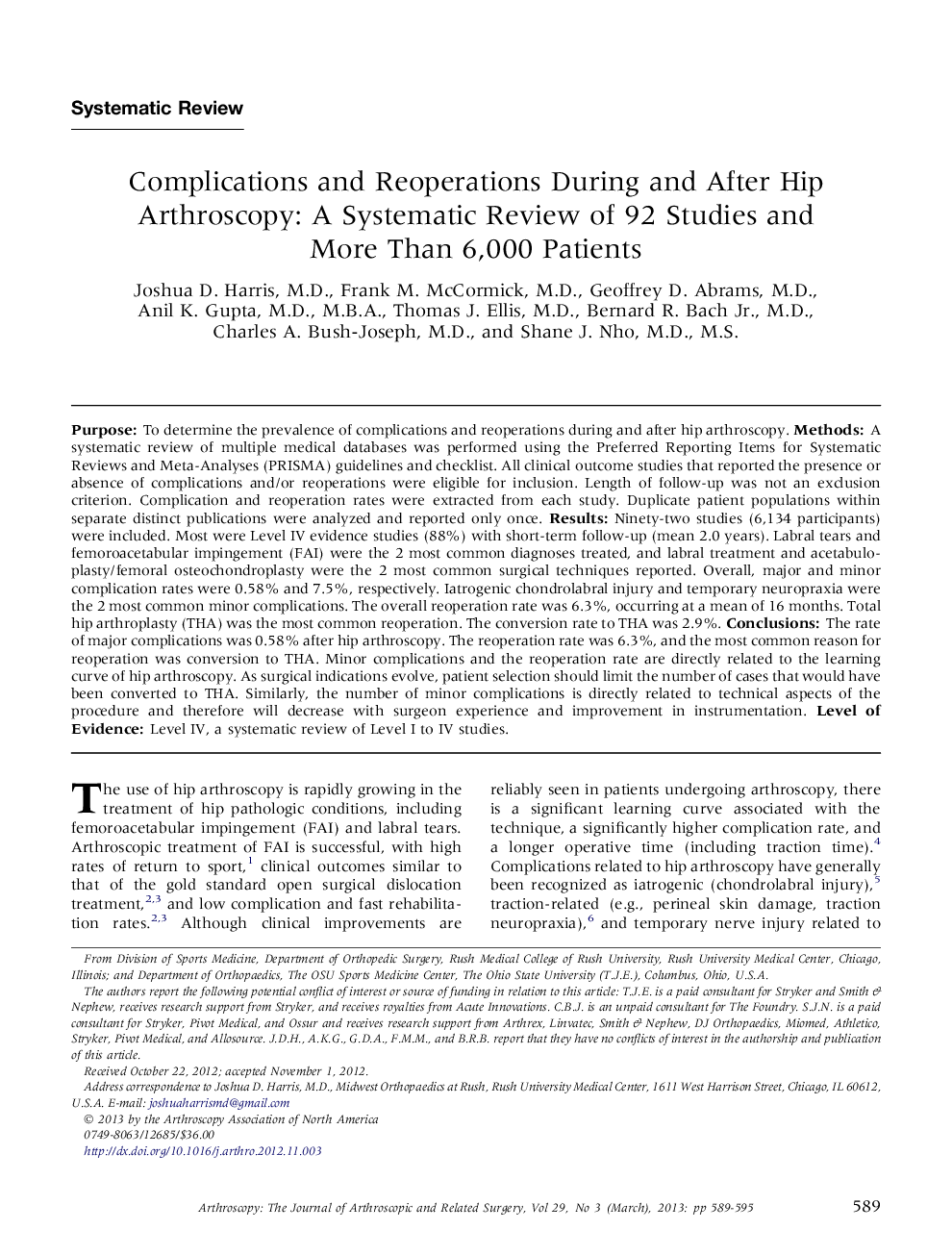| کد مقاله | کد نشریه | سال انتشار | مقاله انگلیسی | نسخه تمام متن |
|---|---|---|---|---|
| 4044088 | 1603514 | 2013 | 7 صفحه PDF | دانلود رایگان |

PurposeTo determine the prevalence of complications and reoperations during and after hip arthroscopy.MethodsA systematic review of multiple medical databases was performed using the Preferred Reporting Items for Systematic Reviews and Meta-Analyses (PRISMA) guidelines and checklist. All clinical outcome studies that reported the presence or absence of complications and/or reoperations were eligible for inclusion. Length of follow-up was not an exclusion criterion. Complication and reoperation rates were extracted from each study. Duplicate patient populations within separate distinct publications were analyzed and reported only once.ResultsNinety-two studies (6,134 participants) were included. Most were Level IV evidence studies (88%) with short-term follow-up (mean 2.0 years). Labral tears and femoroacetabular impingement (FAI) were the 2 most common diagnoses treated, and labral treatment and acetabuloplasty/femoral osteochondroplasty were the 2 most common surgical techniques reported. Overall, major and minor complication rates were 0.58% and 7.5%, respectively. Iatrogenic chondrolabral injury and temporary neuropraxia were the 2 most common minor complications. The overall reoperation rate was 6.3%, occurring at a mean of 16 months. Total hip arthroplasty (THA) was the most common reoperation. The conversion rate to THA was 2.9%.ConclusionsThe rate of major complications was 0.58% after hip arthroscopy. The reoperation rate was 6.3%, and the most common reason for reoperation was conversion to THA. Minor complications and the reoperation rate are directly related to the learning curve of hip arthroscopy. As surgical indications evolve, patient selection should limit the number of cases that would have been converted to THA. Similarly, the number of minor complications is directly related to technical aspects of the procedure and therefore will decrease with surgeon experience and improvement in instrumentation.Level of EvidenceLevel IV, a systematic review of Level I to IV studies.
Journal: Arthroscopy: The Journal of Arthroscopic & Related Surgery - Volume 29, Issue 3, March 2013, Pages 589–595